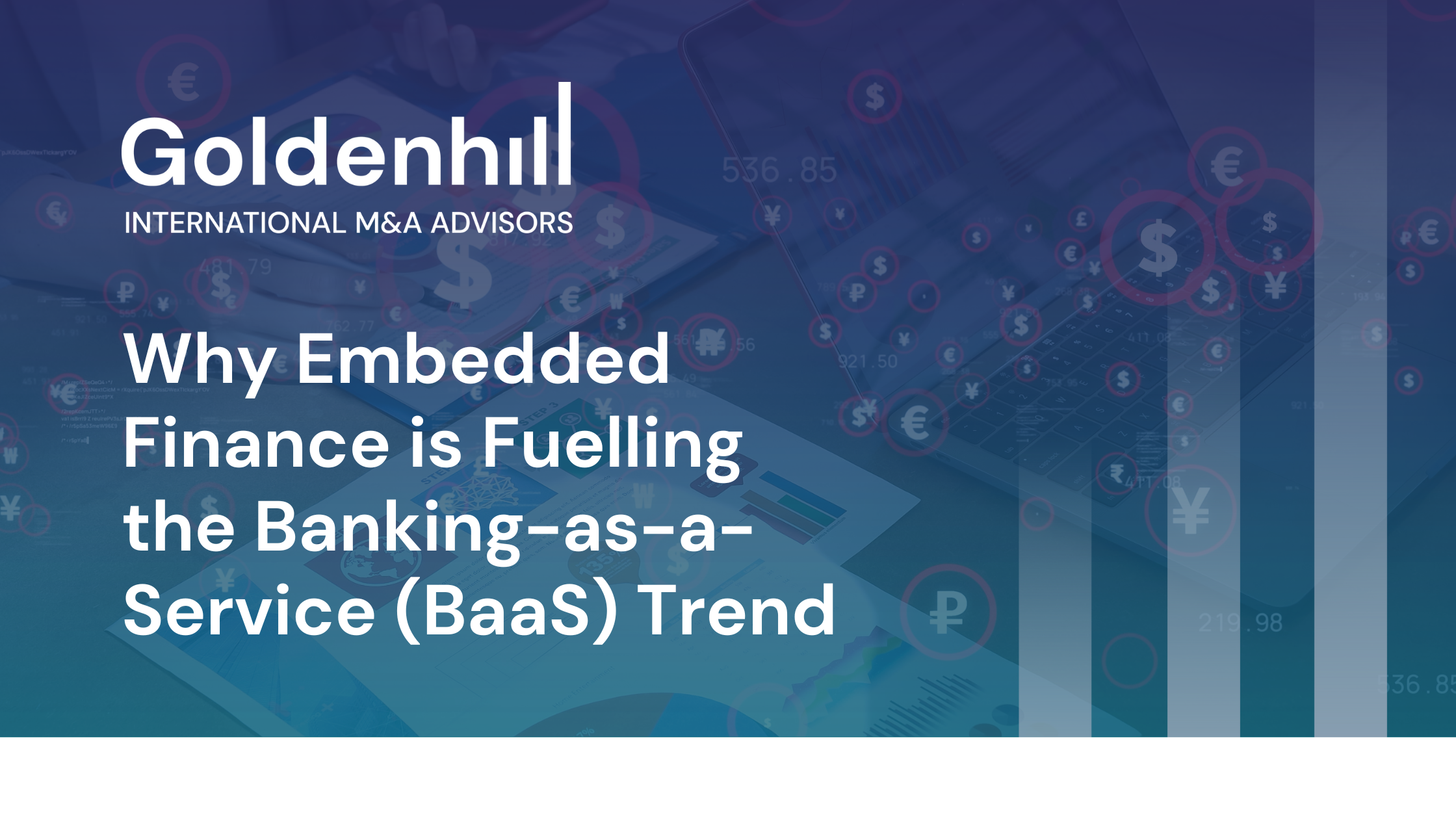
Why Embedded Finance is Fuelling the Banking-as-a-Service (BaaS) Trend in FinTech
Embedded finance is seeing a swathe of innovation with legacy providers like PayPal giving way to a host of new embedded finance players.
It is estimated that the embedded finance market is expected to increase from $241bn in 2022 to $777bn in 2029, growing at a CAGR of 24% over the next 7 years. However, the explosion in new financial products and services offered to consumers through non-regulated entities is driving greater levels of regulatory scrutiny and intervention, as regulators look to protect consumers.
In this article, we look at the rise of embedded finance and the Banking-as-a-Service (BaaS) trend, while also reviewing the latest M&A activity and transactions in this space.
The Rise of Embedded Finance and BaaS
The rise of interest in BaaS is undoubtedly the result of the growing embedded finance trend, where many start-ups are being presented with the opportunity of providing other businesses with embedded services, such as buy now, pay later (BNPL) and trade credit insurance.
With a significant rise in the number of end users adopting embedded finance, banks are now being encouraged to launch BaaS business lines. They are doing so by undergoing their own digital transformations necessary to be competitive in BaaS.
There is no shortage of big players introducing embedded finance solutions. JP Morgan, for example, is looking to dedicate a $12 billion tech budget to embedded banking services, while their rival Goldman Sachs recently announced their own banking-as-a-service portal for developers.
Embedded Finance M&A
This year saw a huge surge in M&A activity in the banking software industry, with (to name a few) The Sage Group acquiring Mateo Cloud, a savings and loan software provider, Gupshup acquiring conversational AI BaaS platform Active Intelligence, and Trustly Group acquiring financial data and payments platform, Ecospend Technologies.
In the last two years, we have seen many technology-enabled financial services firms continue to grow their market shares and product offerings through embedded finance M&A. Embedded finance startup Rupifi, is the latest example of a growing interest by investors in the space, having just completed a $25 Mn Series A funding round.
The first quarter of 2022 saw over 142 M&A transactions take place in the Financial Technology sector, with banking software accounting for the most deals (20%) followed by payments (17%). There were many transactions in the embedded finance and payments sector, including PSCU’s acquisition of Juniper Payments, a provider of SaaS-based interbank transaction and reporting systems for financial institutions, and TokenEx’s acquisition of electronic payment software solutions provider Auric Systems International.
We have also seen the consolidation of domestic payment service providers, including Worldline’s acquisition of Ingenico for $7.8 billion, in a bid to become Europe’s new world class leader in payment services.
The Future of Embedded Finance
With the global market for payment gateways projected to grow at a compound annual growth rate of 16.43% to reach a total of $42.9Bn by 2026, embedded finance is set to revolutionise payments and broaden the horizons of innovation within the financial services sector.
New and innovative payment solutions are revolutionising the payment landscape for consumers and businesses alike. In banking, embedded finance is becoming an integral part of many non-traditional financial services, while for many it will soon become the new norm.
Next Steps
Embedded finance represents a massive new opportunity enabling companies to offer digital financial services. M&A will prove critical to Financial Technology businesses’ ability to become undisputed market leaders in the embedded finance space.
Want to find out more about recent M&A activity in the Financial Technology sector? View and download our latest Q2 FinTech M&A Review here.
Author: Chris Brooke
Partner
Highly experienced M&A advisor with a particular emphasis on the FinTech sector, market data, and analytics, including ESG (Environmental, Social and Governance) software and data globally; assignments include working with leading privately held and listed businesses covering the FinTech, market data, and ESG spectrum. Over a career spanning more than 25 years, I have advised on FinTech M&A transactions in over 17 countries worldwide, working with both buyers and sellers of FinTech businesses.
Prior to joining Goldenhill, Chris held senior positions in business and corporate development, marketing, and product management at several FinTech companies.
If you are an owner or senior executive of a FinTech business interested in discussing how M&A could help you accomplish your objectives – please get in touch.
